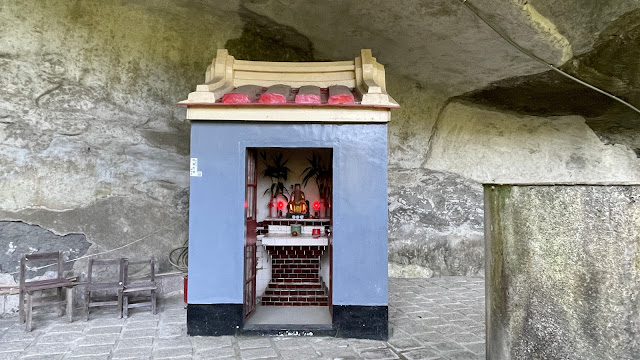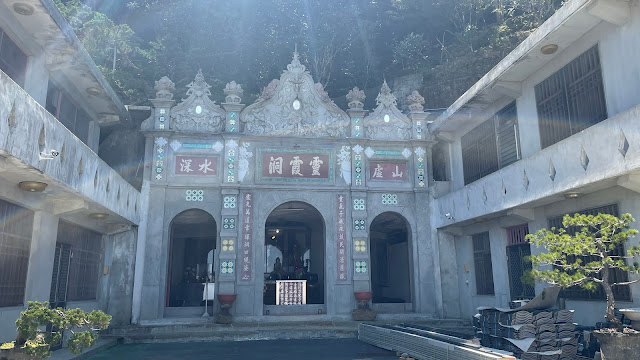Finally, the weather improved and became warmer and sunny. I wasn't sure where to go, so I thought about Lion's Head Mountain, which we had passed by several times before. We parked at the beginning of the Shishan Historic Trail on Hsinchu's side and hiked all the way to Lingxia Cave (靈霞洞). Later on, we returned to our scooter and rode to Shitoushan Quanhua Temple, which is on Miaoli's side. There is a road that you can continue on from Lingxia Cave to reach the temple, although my husband and son were complaining about the amount of walking. Maybe next time we can explore another trail there.
Check out my YouTube video
Lion’s Head Mountain (獅頭山)
Lion's Head Mountain (獅頭山) is only 492 meters at its highest point and covers an area spanning Miaoli and Hsinchu counties. The mountain is considered sacred to Taiwanese Buddhists and is a popular weekend tourist destination due to the presence of numerous temples, shrines, and monasteries scattered throughout the mountain. Its slopes are covered in dense, lush forests with various rock walls, caves, and grottos.
In 1892, a Buddhist monk named Pujie from Taoyuan discovered a collection of bones in a cave while exploring the area. He requested the landowner to construct a temple to honor the deceased. The temple, initially known as Shiyan Dong (獅巖洞) or Lion Cave, was located near the peak of the mountain, which resembles a lion's head. It was later renamed Yuanguang Temple (元光寺). Following the construction of Shiyan Dong, many more temples were established, including Quanhua Temple (勸化堂) on the Miaoli side. Several of these temples were partially built within caves, on cliff walls, or beneath rock overhangs.
In 1993, Lion's Head Mountain was designated as a Provincial Scenic Area. This 24,221-hectare zone includes other attractions such as Emei Lake, famous for the Buddhist complex Nature Loving Wonderland, as well as the Beipu area, known for its Hakka culture, Old Street, and cold springs.
There are four main hiking routes on Lion's Head Mountain, all starting near the Shitoushan Visitor's Center on the Hsinchu side. The most popular trail is the Shishan Historic Trail (獅山古道), which leads from the Hsinchu side to Quanhua Temple on the Miaoli side. The trails on Lion's Head Mountain are well-marked and not too difficult. On weekends, you can often see local middle-aged and elderly hikers enjoying the trails.
Quanhua Temple's kitchen, located right next to the main shrine at Futian Temple, also serves simple Buddhist vegetarian meals by donation at 6:30 a.m., noon, and 5:30 p.m.
Fu Tian Temple (輔天宮)
Fu Tian Temple (輔天宮) is a Buddhist temple that was built during the Japanese Colonial Period in Taiwan. Completed in 1915, the temple incorporates traditional Taiwanese design elements adhering to Feng Shui principles. It stands as a testament to the Japanese influence on the local people at that time. The main shrine of the temple is dedicated to Ksitigarbha Buddha (地藏菩薩), a popular Japanese Bodhisattva commonly known as "Jizo" in Japanese. It is common to find depictions of Ksitigarbha in Taiwanese Buddhist temples.
Lingxia Cave (靈霞洞)
Lingxia Caveis a natural cave known for its stunning rock formations and spiritual significance.
Shitoushan Quanhua Temple (獅頭山勸化堂)
Shitoushan Quanhua Temple is situated on the Miaoli side of Lion's Head Mountain. The temple holds great cultural and religious significance in the area. It was established within a natural cave, blending harmoniously with the surrounding environment. Shitoushan Quanhua Temple is dedicated to Guanyin Bodhisattva, a revered figure in Buddhism known for compassion and mercy.
Unfortunately, Shitoushan Quanhua Temple was not open to visitors today.























0 komentarze:
Post a Comment